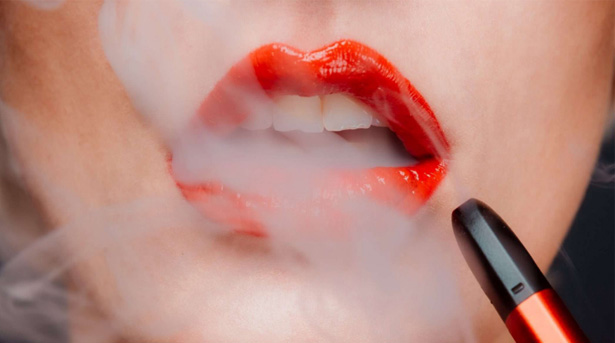
Vaping Is Safer
Vaping is safer than smoking.
Says who?
The U.S. Food and Drug Administration.
The agency “admits vaping is safer than smoking but refuses to
correct the record,” reported Guy Bentley at Reason recently.
It’s a serious charge, with potentially dire consequences if true.
“I’m fully aware of the misperceptions that are out there,”
admitted FDA’s Center for Tobacco Products Director Brian
King. “We do know that e-cigarettes” have “markedly less risk
than a combustible cigarette.”
Bentley goes further, noting that a 2020 survey found that only
2.6% “of Americans accurately believed” this.
“Such ‘misperceptions’ keep ‘many smokers from switching to a safer product’ and cause ‘a rash of bad public policy decisions, such as ‘bans on nontobacco flavors in e-cigarettes’ and ‘taxes that make vapes just as expensive as cigarettes,” the New York Post pointed out. “But at a conference days later, King proudly pointed to the fact ‘the FDA has denied more than 99% of e-cigarette applications to stay on the market.’ The agency clearly won’t ‘correct any of the widespread misinformation about e-cigarettes anytime soon.’”
The shame of it is that these misperceptions about vaping are
keeping lots of smokers from making the jump to a product that
is safer, and lead to misguided policy decisions such as bans on
nontobacco flavors in e-cigarettes and too-high taxes on vapes.
The FDA, noted Jacob Sullum at Reason, “seems determined
to make vaping products, the most promising harm-reducing
alternative to cigarettes, less appealing to smokers. The
perverse combination of these two regulatory strategies would
undermine public health in the name of promoting it.”
The report “comes as the FDA faces intensifying criticism
about its handling of e-cigarette products, which are required
to receive agency authorization to stay on the market,” reported
the Washington Post. “The agency has reviewed millions of
applications, and denied most of them, but critics say the
process has been too slow and that enforcement is lax against
companies that flout the rules.”
Recognition
And yet even without the government getting its story straight,
Americans – even young ones – recognize that vaping is,
indeed, a safer alternative to cigarettes.
A study released recently by the FDA together with the U.S.
Centers for Disease Control and Prevention (CDC) found
that 2.55 million middle and high school students across the
United States reported e-cigarette use over the previous 30
days in 2022, which includes 14.1% of high school students
and 3.3% of middle school students. Nearly 85% of those
youths used flavored e-cigarettes, and more than half used
disposable e-cigarettes.
Among youngsters who currently used e-cigarettes, CDC said
in its release, 14.5% reported their usual brand was Puff Bar,
followed by Vuse (12.5%), Hyde (5.5%), and SMOK (4.0%).
More than one fifth (21.8%) reported their usual brand was
one other than the 13 listed in the survey.
The findings, published in the Morbidity and Mortality Weekly
Report, are based on data from the 2022 National Youth
Tobacco Survey (NYTS), a cross-sectional, self-administered
survey of U.S. middle (grades 6 to 8) and high (grades 9 to 12)
school students, which was administered January 18 to May
31, 2022. The study assessed current use -- on one or more of
the previous 30 days -- of e-cigarettes, frequency, and use by
device type, flavors, and usual brand.
Among the other findings:
• Frequency of Use: Among youths who currently used
e-cigarettes, more than one in four (27.6%) used them
daily, and more than four in 10 (42.3%) used them on 20 or
more of the past 30 days.
• Device Type: Among youths who currently used
e-cigarettes, the most commonly used e-cigarette device
type was disposable (55.3%), followed by pre-filled or
refillable pods or cartridges (25.2%), and tanks or mod
systems (6.7%). In addition, 12.8% reported not knowing
the type of device used.
• Flavored E-cigarettes: Among youths who currently used
e-cigarettes, 84.9% used flavored e-cigarettes, i.e., with
flavors other than tobacco, including 85.5% of high school
and 81.5% of middle school students reporting use. Overall,
the most used flavors were fruit (69.1%); candy, desserts, or
other sweets (38.3%); mint (29.4%); and menthol (26.6%).
Due to changes in methodology, including differences in
survey administration and data collection procedures in recent
years due to the COVID-19 pandemic, the ability to compare
estimates from 2022 with those from prior NYTS waves is
limited, the agency said. “Differences between estimates might
be due to changes in methodology, actual behavior, or both.”
The takeaway is that, while government agencies are always
slow to acknowledge facts and shift policies, the American
public is usually sharp enough to do so on their own – and the
benefits of vaping are just one example
